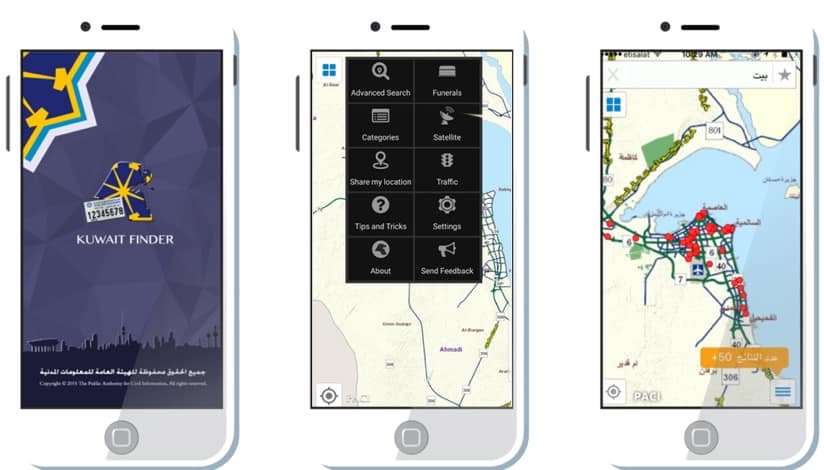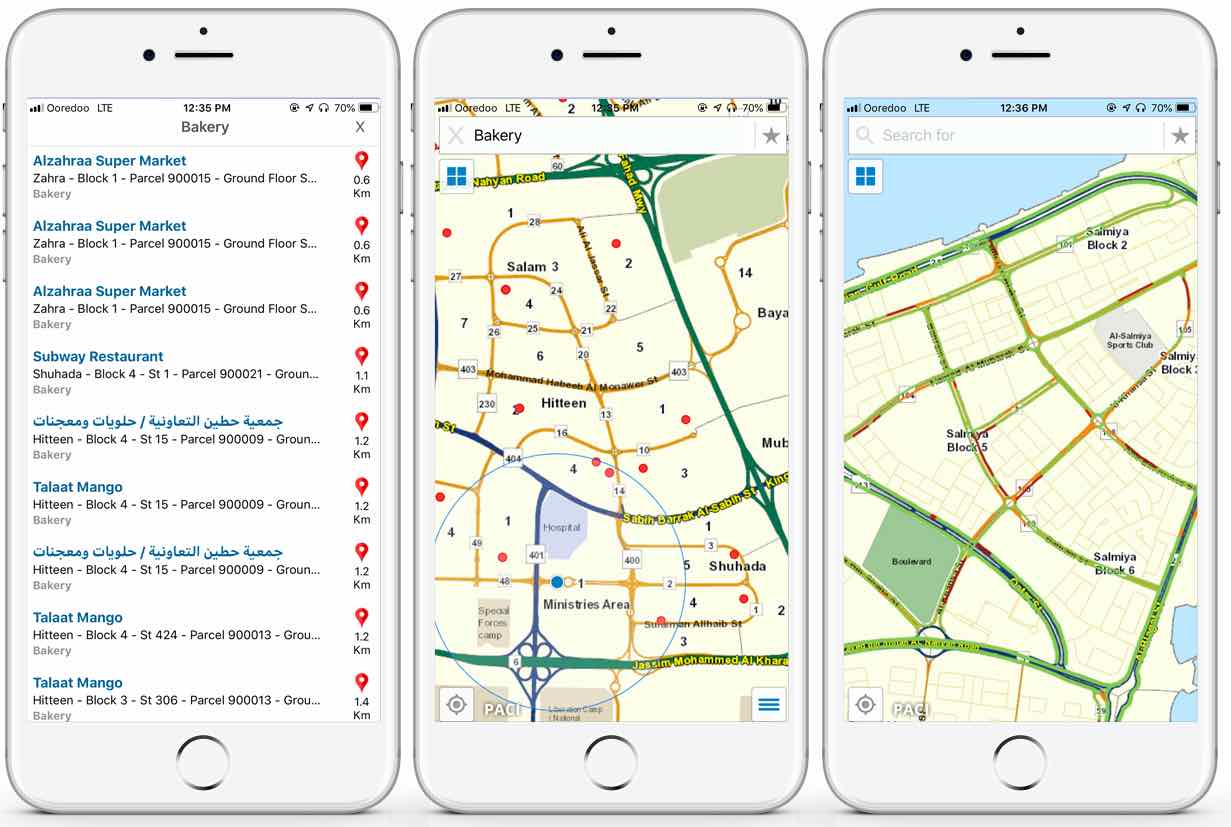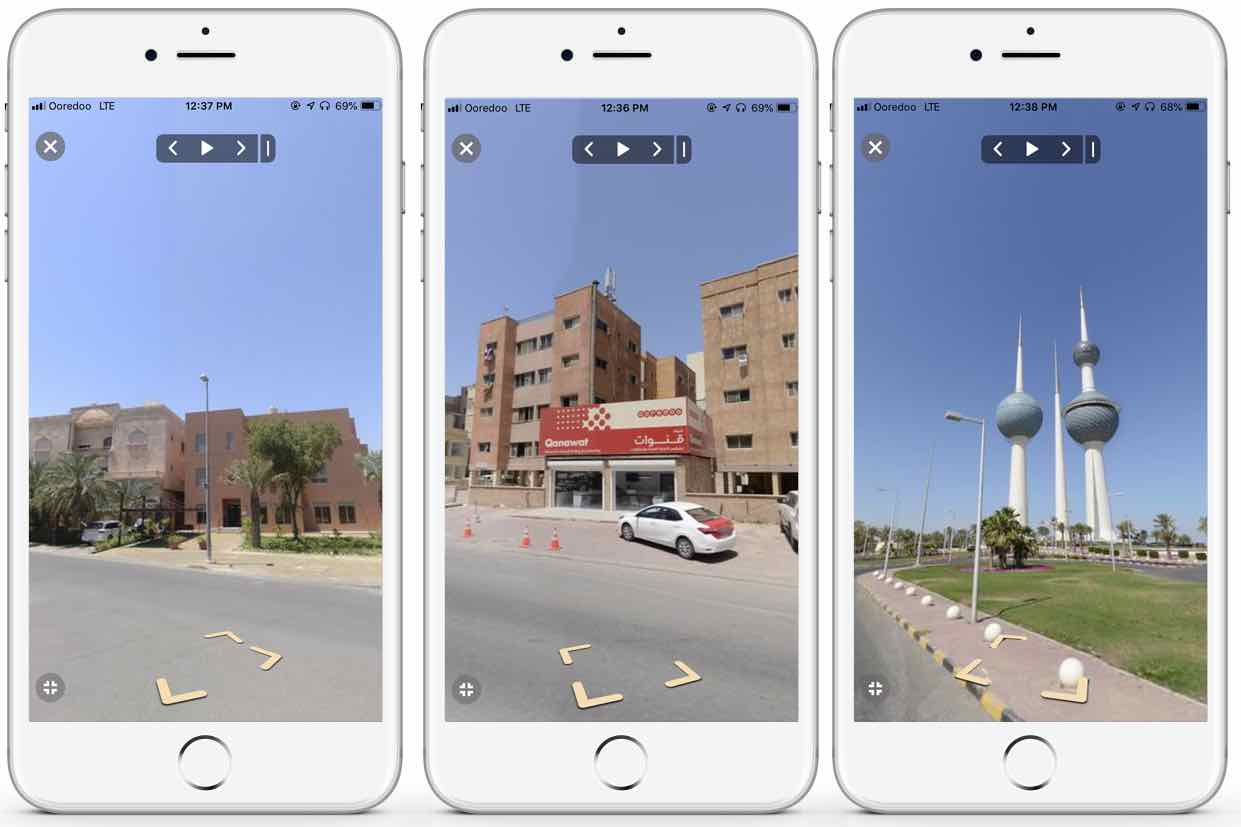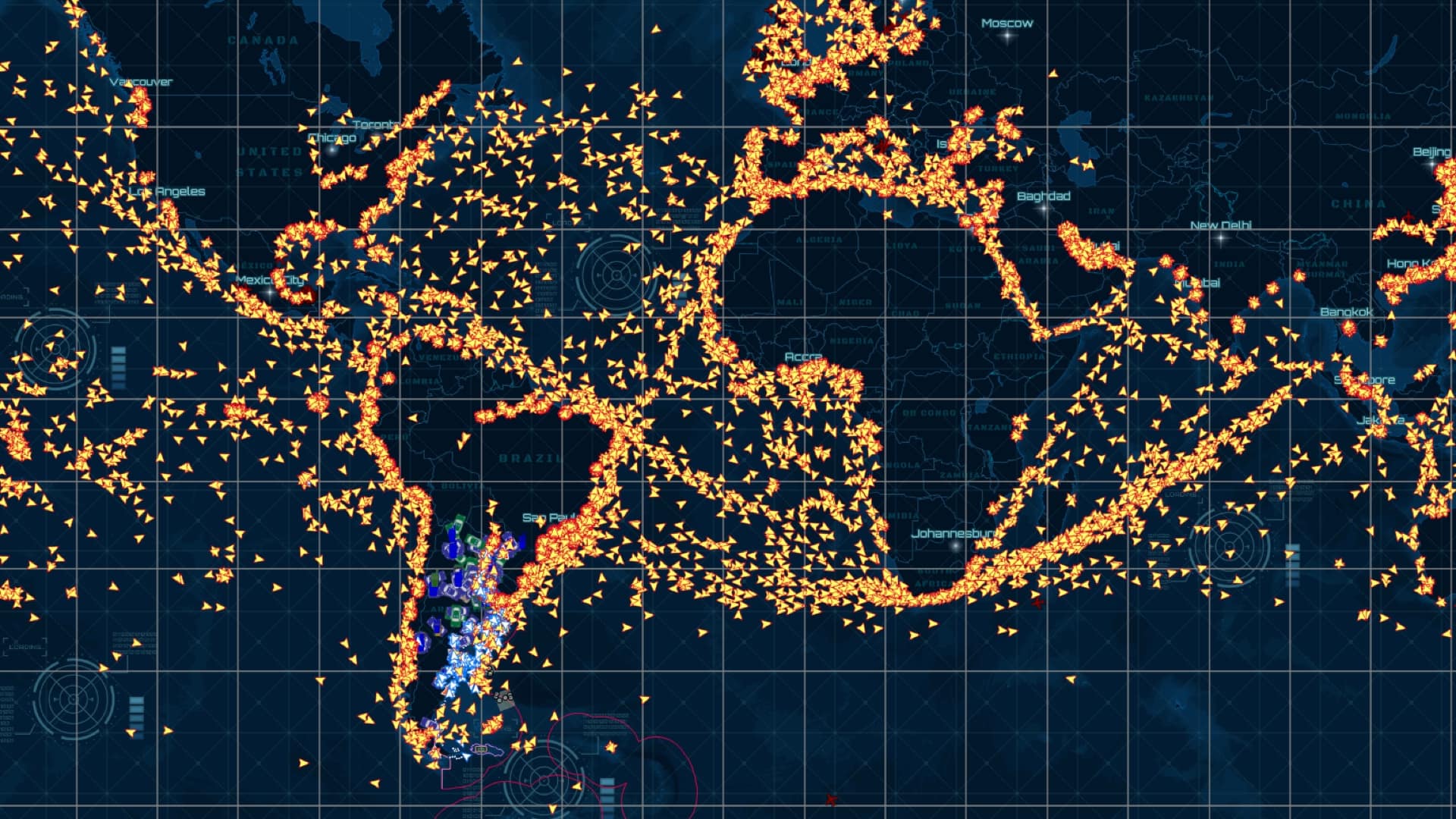

January 24, 2019

If you were navigating Kuwait City and asked a local for directions, you might receive instructions like, “Salmya, block 5, street number 5, house number 10 or go to Fanar tower.”
Kuwait’s 4.6 million residents often navigate this way—using landmarks and descriptive addresses to move around their country. Much of that is due to Kuwaiti streets being a mix of numbers and names. Addresses consist of street numbers, area numbers, block numbers, and villa/house numbers. It’s hard for signage to capture all that detail, and tough to keep all the numbers straight in your mind.
Now, a new homegrown app called Kuwait Finder is easing travel for as many as 650,000 users. The app will make it easier for residents, business operators, and even some government agencies to locate destinations.
The Kuwait Finder app is a customer-focused offshoot of a rapid digital transformation unfolding in Kuwait.

Turning Internal Maps into External Resources
Even tried-and-true mapping apps have trouble providing exact addresses in Kuwait, only able to represent information down to the street level.
While map and app makers don’t know where to find every building in Kuwait, one government organization does: The Public Authority for Civil Information (PACI).
Officials with PACI collect place details and demographic data across Kuwait, issuing a unique ID number for each person, business, building, and even units within buildings.
By using a unique number for each location, the PACI team can prevent errors. There are similarities such as Sabahiya Block 3 and Shamiya Block 3 that, if mixed up, could put you on the wrong side of town. A similar system of unique ID numbering is also used by Great Britain’s Ordnance Survey for its Topographic Identifiers, or “TOIDs.”
With its unique ID numbers, the PACI team has built up a massive trove of accurate, geo-referenced data–information tied to specific locations. This data is stored and visualized for internal use on a geographic information system (GIS) map. PACI shares this GIS data with other government departments and agencies to help regulate and validate new businesses, match citizens with nearby services, manage operations, and plan future development projects.
But, the PACI team needed a way to share this wealth of information with the public, to help people find what they were looking for. Enter: The Kuwait Finder app.
There’s an App for That (in Kuwait)
In early 2011, PACI completed a new country-level GIS for Kuwait. With a renewed GIS foundation, the government quickly modernized a number of operational systems (see sidebar).
Then Musaed Al-Asousi, Director General of PACI, realized they could also share data and apps with the public. “The people on the street can use it too,” he said. “That really made me have this passion for GIS. The technology enabled us to serve the people and also open a lot of future projects and think about new ideas.”
Kuwait Finder launched in 2013 with basic search and navigation capabilities for public use. It is available as an iOS and Android app, and as a desktop web application. Users can search by a location’s PACI ID number if known, by business or landmark name, or by detailed address description.
The app received positive feedback from users via reviews, social media, and surveys, including ideas on how it could be improved. PACI has implemented a continuous improvement approach to the app, working to better meet the needs of Kuwaiti residents.
“Any project we do, we always think about how to serve others. So from an information point of view, from a statistics point of view, from even technical and consultation points of view, myself and my team help enable others to do their jobs better,” Al-Asousi said.
Since launching Kuwait Finder, PACI has added an English language version, turn-by-turn voice navigation, updated satellite imagery, dynamic traffic information and routing, street view, and even 3D buildings, on top of usability improvements and bug fixes.

Hyper-Local Authority
Since it’s Kuwait-specific, the app can handle hyper-local challenges. It does things other mapping apps can’t.
For example, extended families tend to be large in Kuwait, and people often need to know where to go to attend a funeral for a relative or friend. The state is responsible to pay for and organize all services, and locations are then registered with PACI. Traditionally, men and women pay their respects in different locations. So, Kuwait Finder includes a quick look-up tool for current and recent funerals, with icons to select your gender and reveal your designated location.
Traffic in Kuwait City is also uniquely challenging. Thanks to a modern economy, residents enjoy a high standard of living and most own cars. Land zoning tends to be centralized, with most businesses located in one place and residential areas in another, so urban sprawl causes people to travel to and from the same places at the same times. Add those realities to the country’s small geographic area, dense population, and troubling traffic accident figures, and the result is a problematic, difficult-to-predict traffic situation.
To give residents better information about traffic conditions, PACI officials enabled real-time traffic on Kuwait Finder. They used a location-based machine learning algorithm to learn and predict Kuwait’s unique traffic patterns. Similar to traffic app Waze, users agree to contribute their own location data to inform predictions and update traffic reports for everyone. Over time, this generates a feedback loop of benefits for both the users and PACI.
Al-Asousi explained, “We were able to publish the traffic map as a layer on our Kuwait Finder map. This was very useful in two ways. Number one, it immediately helped guide people to the fastest routes. Number two, it collects data about traffic, which was very difficult to track in the past.”

Finding Things Is Good for Business
Residents aren’t the only ones using Kuwait Finder. Local startups are using it for a quick-reference snapshot of the competition. An entrepreneur planning to open a specialty bakery might type in the tag “bakery” to see the locations of all existing bakeries in Kuwait City. They can then identify gaps in the market and choose the best location for their new shop.
Existing businesses also use Kuwait Finder–especially for deliveries. Imagine the difficulty of operating a delivery-based business model in an area without specific addresses. The app has been invaluable to those companies, as evidenced by app store reviews from users identifying themselves as delivery drivers.
PACI also offers APIs so that government agencies and the private sector can integrate the information displayed in Kuwait Finder into their own apps or business operations. About 100 organizations are already connected and leveraging the data.

Finding the Future
Currently, Kuwait Finder’s desktop version is 3D-enabled, and this added realism will be coming to the app soon. The PACI team has started an initiative to use LiDAR to scan Kuwait City’s streets to improve 3D details and update the app’s street view.
LiDAR, which uses laser light to map surfaces similar to how radio waves are used for radar, can also be used to help extend navigation indoors. For example, a team could map the inside of a large shopping mall. The data could be added to Kuwait Finder, so users could get directions through the mall right to the doorstep of a certain shop.
More broadly, the PACI team plans to work with other government agencies to launch an online open data portal known as a GeoHub. By sharing even more geographic data with the public, a GeoHub like the one launched in Los Angeles can help foster communication and collaboration between residents and the government.
Al-Asousi sees PACI as building a foundation of location data that can be used by others for virtually unlimited types of analysis, planning, and decision-making for the country. “We enable analysis now and are moving toward predictive analysis of this data.”
Predictive analysis might model how traffic patterns would change if an overpass was added, illuminate road construction that could reduce accidents, or calculate how many schools might be needed if a residential area expanded at a certain rate.
The data PACI collects and nurtures will continue to grow. It’s expected to enable new uses and analyses in the future. With Kuwait Finder, location data is already delivering value to residents who can now simply share and find the location of any unique PACI ID. The PACI team has given residents a better way to navigate their thriving country.
As Al-Asousi stated, “The new technology of GIS provided better tools to be able to deliver the best map of Kuwait and give it to all other government and private sector agencies.”
Learn how countries use the GIS to deliver information to policy makers and the people.


